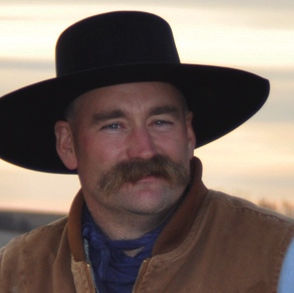A recent “Across the Pond” television program with Andrew Henderson in the United Kingdom led to a discussion on how important the mule has been throughout the course of time. The conversation actually started with a walk down memory lane and a TV program I did with Gordon Woods of the University of Idaho about his famous cloned mules.
The purpose of that was to help the medical profession gain insight into a cure for cancer. Equine do not suffer the same effects from cancer cells as humans. Sadly, it appears we lost Woods in 2009 before he was able to publish the findings of his research.
I thought it would be interesting to hit just a few of the highlights regarding the impact mules have made throughout the course of human history. Just to be clear, a mule is the result of a male donkey breeding a female horse. If a stud horse breeds a jenny (female donkey), the resulting offspring is called a hinny.
In ancient Egypt, while the Pharaohs were carried about in fancy litters by servants, the common people often had to use mule drawn carts. An Egyptian monument from Thebes depicts mules yoked to a chariot. Mule remains are frequent in the archaeological record, suggesting that mules had become a “mainstream” animal early on, used primarily for pulling wagons or transporting burden.
To the north in Asia Minor, the Hittites were the most powerful of the early horse-people—but they considered the mule to be at least three times more valuable in price than even a good chariot horse.
At King David’s coronation, mules transported food, and David often rode a mule. Considered as an indicator of social status during David and Solomon’s time, mules were ridden only by royalty.
After the Revolutionary War, George Washington started a program to develop a larger, stronger mule to be used on farms—to replace horses in the field. In less than 15 years, Washington had 58 mules working at Mount Vernon.
By 1808, the United States had an estimated 855,000 mules worth an estimated $66 million. Mules were rejected by northern farmers, who used a combination of horses and oxen, but they were popular in the south—where they were the preferred draft animal.
On wagon trains across the Plains, mules could cover 30 miles a day, while wagons drawn by horses and oxen could average only 5 miles a day.
The mule has been the unsung hero of improving life for thousands of years. The fact that the mule is sterile and cannot reproduce has certainly been a limiting factor in its prominence. As a person who has started training several mules, they have one trait that is quite impressive: The never forget anything.
With time and effort, you can retrain the horse to break bad habits but the mule will always remember. I can also tell you that if you give them an inch one day, they will take two the next day. It is vital you go back to ground zero and start over. The failure to do so may allow you the opportunity to meet medical professionals that you really didn’t want to meet.
Here is my assessment: Through the course of human history, our partnership with mules has improved human lives. However, if you try to have a heavy hand and do not view the mule as a partner, you will end up frustrated. Now the question should be asked: Where in life is this not the case? Indeed, it all starts with mind-melding and not a show of force.
Editor’s note: The views expressed here are the author’s own and do not represent the views of High Plains Journal. Trent Loos is a sixth generation United States farmer, host of the daily radio show, Loos Tales, and founder of Faces of Agriculture, a non-profit organization putting the human element back into the production of food. Get more information at www.LoosTales.com, or email Trent at [email protected].
